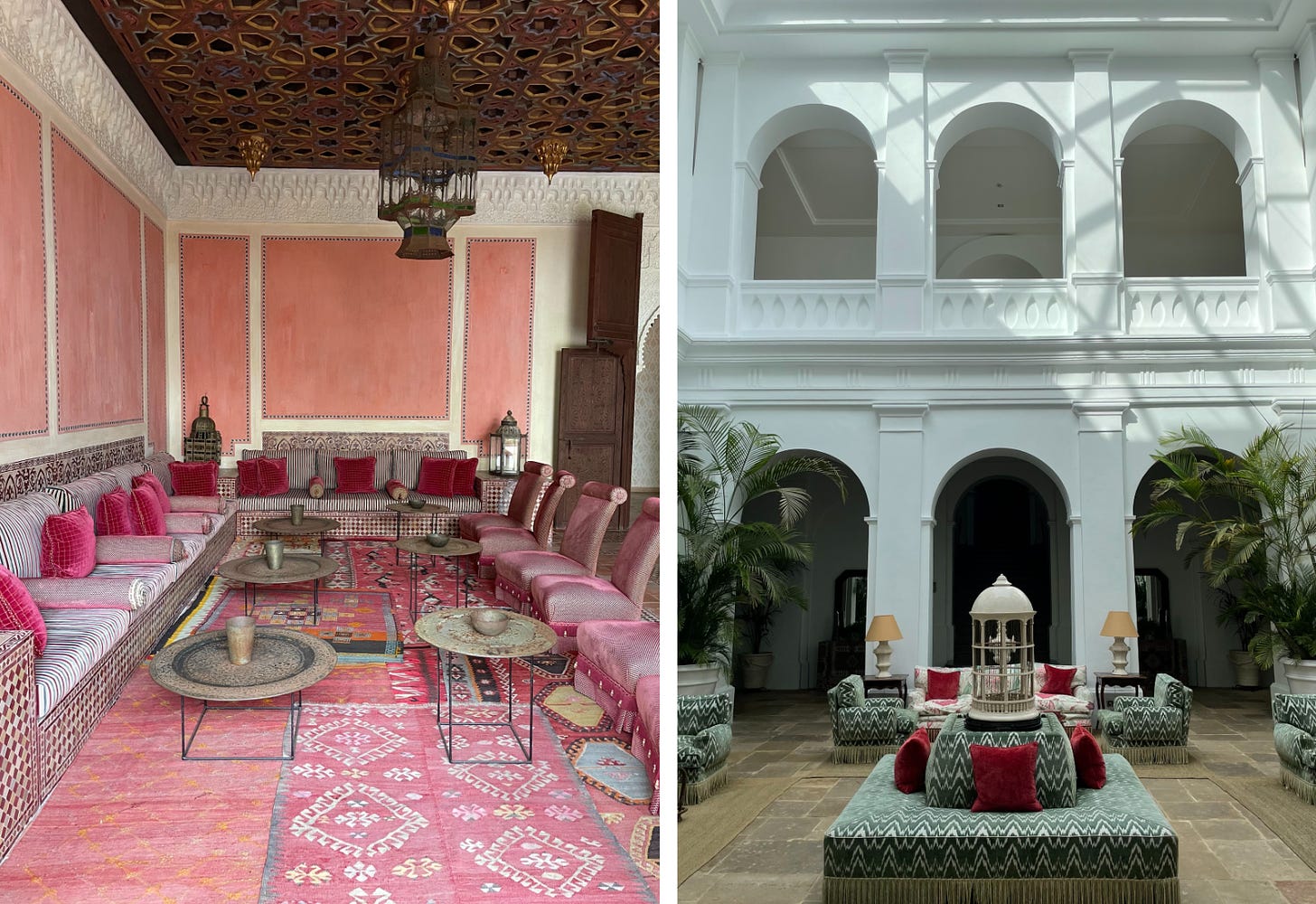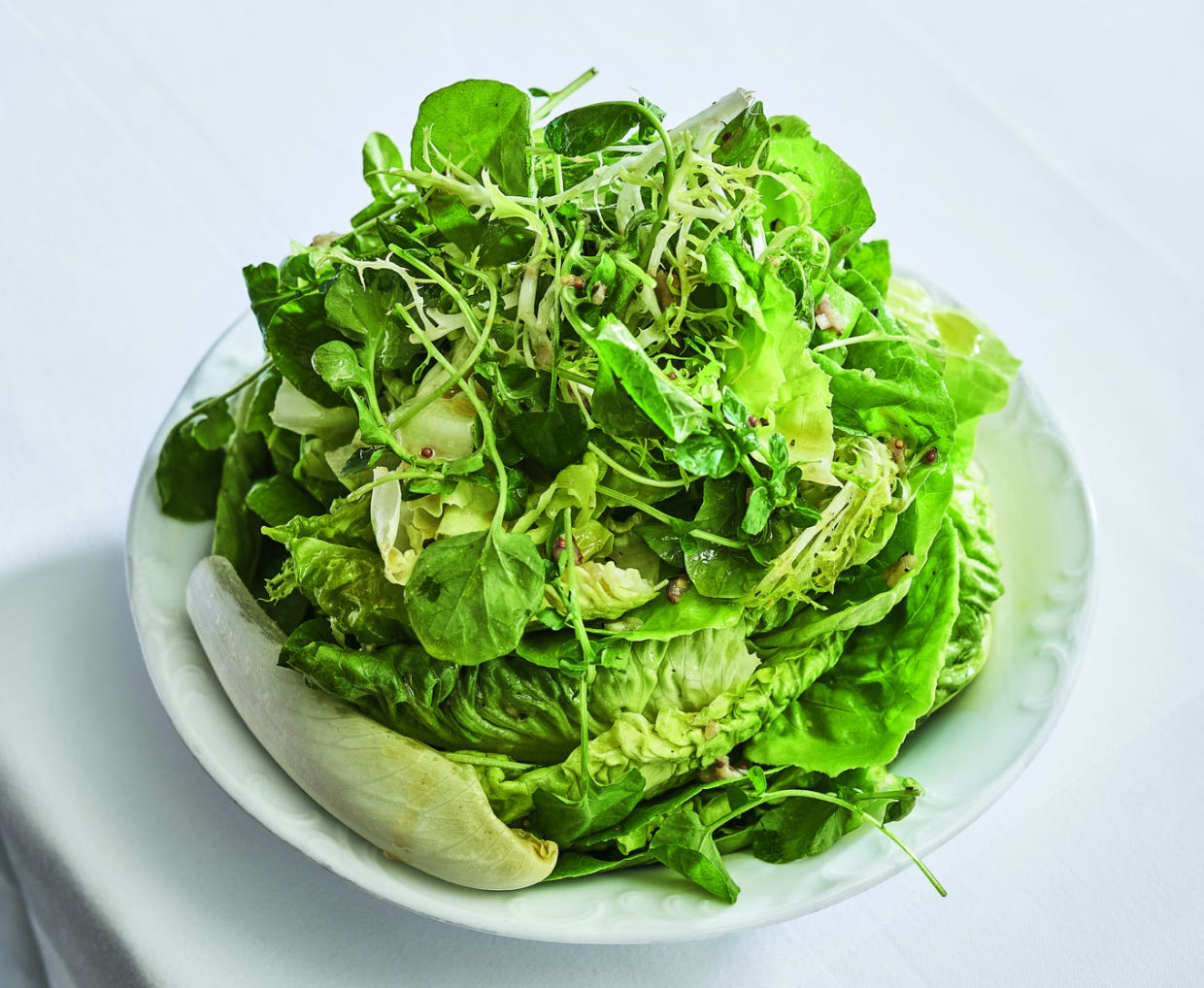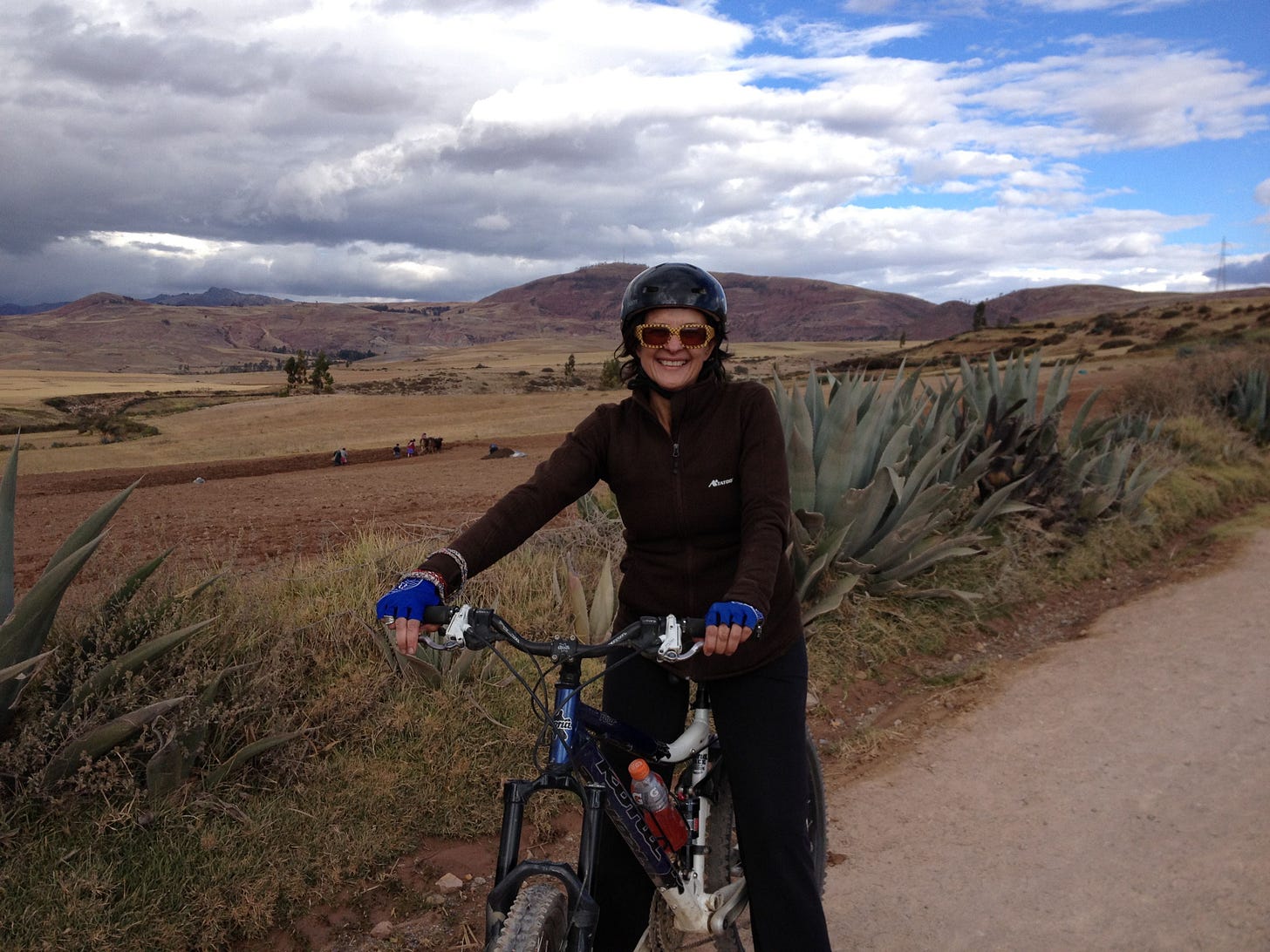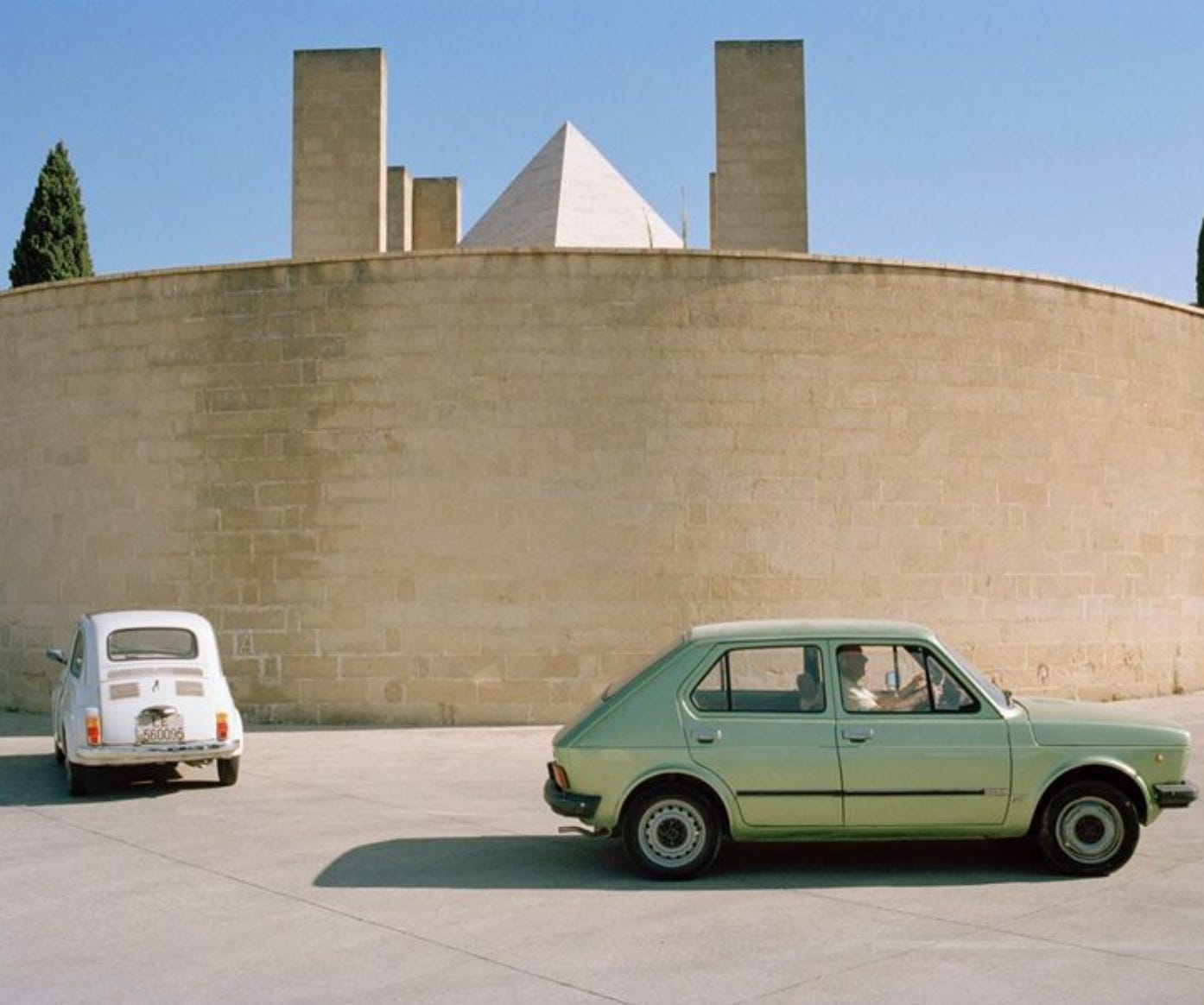Bric-a-Brac 38
Our new Guest Book takes us to an Andalusian resort and a historic Mallorcan mansion-hotel—plus the coveted Via Carota salad recipe and the woman with the inside track on travel in Peru and Bolivia
GUEST BOOK
After our whirlwind Madrid trip, we took a train two hours south to Málaga and then drove an hour west along the Costa del Sol to the Finca Cortesin, an Andalusian resort I’d wanted to visit for ages, as I’ve had several quite discerning friends who go back every year. Usually when I’m checking out a property for Yolo, unless it’s a place I’m planning specifically for a personal vacation, I go in as blind as possible. Meaning, I don’t do advance research, I don’t Google the founders, the history, nothing. While that might seem counterintuitive given that I’m there to report on it, I feel like it’s the best way to experience it as purely as most guests would.
So when we walked through the grand entrance with its beautiful hanging tapestries, heavy wood antique tables and chairs…everything said it’s been here forever. But actually, as impossible as it seems, this isn’t a centuries-old structure, it’s a ground-up build that opened in 2009. All the spaces were conceived by the legendary Portuguese interior designer Duarte Pinto Coelho, who repurposed an abandoned convent in Portugal, using its stones, doors and wooden beams. Its borrowed history means it doesn’t feel cookie cutter in the least—the decor leans more old world, and it has a real soulfulness. Rooms are huge (although not done by Coehlo, so they have a bit more of a contemporary vibe), there are multiple pools (one for just adults) and an epic spa with cold plunge/sauna/steam/ice room and excellent Thai massage therapists. There are five restaurants to choose from (Spanish, Japanese, Italian–many people stay at least a week so there are plenty of options), and though we only had two nights here, everything we ate was great. The bar staff were excellent and the somms introduced us to Spanish wines normally would have been a mystery to us . The beach club is five minutes away by shuttle, and the golf course is supposed to be epic.
From the Finca Cortesin we flew to Mallorca (sadly we didn’t build in time to stop at the Picasso museum in Málaga, a mistake we won’t make next time), and headed to the Sant Francesc Hotel Singular in Palma’s old town, a 15-minute taxi from the airport. We were starving, so we headed to their rooftop terrace where we had probably one of the best club sandwiches ever, like a grilled-cheese-meets-club—divine. It had incredible views overlooking the city and the cathedral (one of the most impressive I’ve visited), with a pool in the foreground. The room was well appointed, with actual light switches (not electronic, which is a big pet peeve of mine—why should you need a handbook to learn how to turn off the lights?!). A 19th-century mansion, its public areas are lovely—that hard-to-achieve balance of historic and modern—a thoughtful renovation that makes it feel period-less, just cool. Once the sun goes down on the rooftop, the bar downstairs is a great place to hang out before a late dinner. We chatted up our very knowledgeable bartender, who not only made a great martini, he dispensed lots of thoughts on the best places to eat paella. While the restaurant wasn’t open while we were there, friends have told us it’s great—then again, you’re in the middle of town, so you have plenty of options super close. We rented a car through the hotel one morning and drove through Deia and Soller, just to see a bit of the island with the limited time we had. Since it was 80+ degrees in late October, so why not (more on the island in a future Dispatch!), and we were so pleased that for our short visit we’d made Palma our home base.
THE RECIPE
Via Carota is one of those neighborhood restaurants that is adored by both New Yorkers and out-of-town pilgrims who are willing to wait for a seat in the tiny Grove Street trattoria. Co-owned and co-helmed by chefs Jody Williams (of Buvette) and Rita Sodi (who together also run the likewise beloved I Sodi and their latest, the Commerce Inn), it focuses on simple but elevated pasta and seasonal vegetable dishes including some of the best renditions of fava beans and artichokes west of Florence. Our favorite example of this just might be the Insalata Verde, a tall pile of tender-crisp green leaves with the most delicious herby dressing that we’ve never been able to replicate at home. But now we can, because their cookbook recently came out: Via Carota: A Celebration of Seasonal Cooking from the Beloved Greenwich Village Restaurant (Knopf). (The book was also beautifully co-created by a few super talented colleagues from our Martha Stewart days—recipes developed with Anna Kovel, styled by Ayesha Patel and photographed by Andrea Gentl & Martin Hyers.) Could the magic ingredient in the dressing be…warm water??
You can order the Via Carota cookbook here.
Insalata Verde
Leafy Greens with Via Carota Vinaigrette
Serves two
1 head of butter lettuce, such as Bibb or Boston
a few pieces of frisee (about 6)
2 handfuls little gem lettuce leaves, or other crisp lettuce
a small handful peppercress or watercress
salt
pepper
¼ cup/60 ml Via Carota Vinaigrette (below)
3 spears Belgian endive
Pull off any wilted or bruised outer leaves from the butter lettuce. Set aside the floppy, darker green leaves for another use. Wash the leaves in two changes of water: First, fill a basin with lukewarm water and soak the lettuces in it, swishing with your hands. Lift the leaves out and drain in a colander. Second, wash the leaves in cold water, again swishing them with your hands and lifting them out. Rinse well. Slice the frisee leaves into smaller pieces and separate the little gem leaves and remove any tough stems from the cress; wash them in the same way.
Spin all the leaves dry in a salad spinner, then spread them out on a large, lint-free kitchen towel. In all, you will have about 6 handfuls of mixed leaves. Gently press on them with another towel and roll them up completely. Place leaves in the largest bowl you can find. Season them with a good pinch of salt and a few grindings of pepper. Drizzle in most of the vinaigrette, tossing with your hands to coat the leaves thoroughly.
Lay the leaves on a plate in gradual stages, so they can be piled high without falling. Tuck the endive spears around the sides and drizzle with a little bit more vinaigrette.
Via Carota Vinaigrette
makes about 1 cup/2 40 ml, enough for 8 salads
1 shallot, very finely chopped (¼ cup)
1 garlic clove, finely grated (about ½ teaspoon)
¾ teaspoon/2 grams sugar
½ teaspoon/1.5 grams salt
6 stems fresh thyme
¼ cup/60 ml aged sherry vinegar
2 teaspoons/10 ml warm water
¾ cup/180 ml extra-virgin olive oil
Place the shallots in a fine-mesh strainer and rinse with cold water. Drain them and transfer to a small bowl with the garlic, sugar, and salt. Strip the thyme leaves off the stems and finely chop the leaves (for about 1 teaspoon thyme); stir into the bowl. Stir in the vinegar and water. Pour the olive oil into the bowl in a slow stream, whisking all the while until emulsified. The vinaigrette can be refrigerated for up to 3 days.
From Via Carota: A Celebration of Seasonal Cooking from the Beloved Greenwich Village Restaurant by Jody Williams and Rita Sodi, with Anna Kovel. Copyright © 2022 by Jody Williams and Rita Sodi. Excerpted by permission of Alfred A. Knopf, a division of Penguin Random House LLC. All rights reserved. No part of this excerpt may be reproduced or reprinted without permission in writing from the publisher.
THE NAVIGATOR
Marisol Mosquera, Founder & CEO, Aracari Travel
We first met Marisol when we were at CNTraveler, and always appreciated her little scoops on Lima’s coolest restaurants or alternatives to Machu Picchu or the best small boat for navigating the Galapagos. Now that spring is in full swing in the Southern hemisphere, we’re thinking about how we can squeeze in a trip to her part of the world.
Tell us about you and your company.
I founded Aracari in 1996, one of the first to specialize in luxury travel in the northern Andes, especially Peru, Bolivia, Ecuador and the Galapagos. We are based in Lima. I was born in Peru, but my family left when I was little and moved to Spain. In the years after, I internalized a nostalgia for Peru, especially because my grandmother remained there—I remember her bringing us egg-yolk-yellow potatoes when she would visit us in Spain.
Later when I was living in London, I worked for a decade as an investment banker dealing in Latin American stocks, and I started going to Peru for business. I realized that tourism could be a big catalyst for development in the country, which had suffered years of political and economic instability. When things stabilized in the ‘90s, I went back. It was just intuitive—I wanted to return and support the country of my birth. In hindsight, it was pretty crazy to leave my job to start something that didn’t yet exist.
What’s the entry level to talk to you?
We talk to everyone, but to design a trip we require a $500 fee and up, depending on the complexity of the trip. Our trips start at roughly $8,000 per person for two people traveling together for a week, or a ballpark of $1,000 per day.
What is the sweet spot of your expertise?
When I set up Aracari in 1996, there were no upscale travelers coming to Peru or Bolivia to experience the magical aspects of these countries: their traditions, their crafts and art, their archeology and cuisine. So, I reached out to many people who I felt had something to offer: their knowledge and expertise, their private art collections and homes, and encouraged them while helping them style their offerings for international visitors. And it worked. Of course, because experiential travel has become trendy, many others have popped up offering imitations. But they tend to be without context. In Peru, you now find ceviche and pisco demos in places where those dishes and drinks are not prepared or consumed, “Payment to the Earth” or spiritual ceremonies done in a shallow way just for tourists.
I always say that a traveler should book with Aracari if they want to feel deeply connected to place. Our clients love to meet real people who are doing real things because they love to do them, not just for show. My personal goal for when my guests travel is to feel there is no transaction involved, that you are being shown around by friends, that it is not a “product.” We make sure that we have high-quality experts, guides, and academics who look after our clients every step of the way in our carefully curated experiences.
For instance, textiles have been made in Peru for millennia, but the craft was vanishing because there was no market for fine textiles made from natural fibers and dyes crafted manually, which are expensive. So we provide a market for the Center of Traditional Textiles in Cusco, a nonprofit that promotes the preservation of the craft. And we have a very close relationship with an art historian who takes our guests to the Monasterio Hotel, a historic property with a very fine collection of colonial art.
Or, if you are committed to seeing Machu Picchu and the Sacred Valley, which have become very touristy, we are going to strongly recommend that you spend the night at Machu Picchu so that you can be there without the crowds, we’ll send you with your own guide on the Hiram Bingham train from Cusco through Sacred Valley, and then in those areas we will take you to visit some of the lesser-known sites.
A favorite trip you’ve planned that best represents your travel philosophy…
We are a bridge between people who share similar passions. For example, we designed a trip to the desert of Northern Peru, which is entirely off the tourist track, an immersion in archeology. We connect you with a family who has in their beautiful home, a relic of the Spanish invasion, countless pots from thousands of years ago that they found when no one was paying attention to archeology up there, and then you meet with their friend, a professor of archeology who found subsequent burial plots that have since been excavated and transferred to a museum. So in this arid desert with no hotels, you can have an intense experience of both pre-Columbian and pre-Hispanic archeological remains and also what came later by seeing a private collection in a very grand house. I think the network we have developed and our seriousness of focus have helped us open doors.
A favorite hotel/lodge/house you love…
Kichic in Mancora, on the beach in Northern Peru. It’s quite raw, but I love the décor, which is intimate and sophisticated, very connected to place. They offer fresh, healthy and deliciously prepared food. It is quiet and relaxing, but you don’t feel isolated. And the service is top notch!
In Lima, I love the Hotel B, the nicest and most beautiful small boutique hotel, with an art gallery and rooms that are to die for.
The most memorable meal you’ve had while traveling…
Certainly at the top of my list is Osaka restaurant in Lima. They are highly skilled at fusing Japanese, Peruvian and international flavors in dishes like tumbo shrimp (tumbo is a Peruvian citrus fruit, which has been used since pre-Inca times), and shio buta, glazed pork belly in salt crust, or chullpi corn tortilla with smoked rocoto oroshi. The atmosphere is lively and the decor very contemporary. I love it!
Underrated location, overrated location, recent discovery?
An underrated location is a private reserve in Northern Peru called Chaparri, where you can see the spectacled bear, the only bear in South America. It is a private reserve and very few foreign visitors go there. It is absolutely amazing.
Overrated location: I would say Rainbow Mountain (Vinicunca), not because it isn’t beautiful, but because it doesn’t make sense to do it as a one-day visit. Plus, now it is very crowded with tourists because it is popular on Instagram.
Recent discovery is the Bosque Guardian ecolodge in the cloud forest of Northern Peru, which has 12 bungalows and will eventually have up to 40. The lodge has a private reserve that protects the forest and creates livelihoods for locals. This area is the cloud-forest ecosystem, where Machu Picchu is located. These are the eastern foothills of the Andes that reach down to the Amazon Basin. In Peru, until now, we didn’t have a nice place to stay with interesting outdoor/nature/eco-activities in the cloud forest. They have a number of sustainable activities like their “Meliponario,” which is where they harvest honey from tiny indigenous stingless bees (!), and their recycled paper artisanal workshop, where they make beautiful paper from banana tree trunk and recycled paper—or swimming in waterfall lagoons and hiking amidst dense hummingbird populations. It’s a marvelous place.
What is something you wished we all knew or were better at as travelers?
Respecting the local people’s private spaces and trying not to make every ritual and every picturesque opportunity into a photo.
Anything else you’d like to share?
I am very excited about our Aracari Shop. It began during the pandemic as a way to bring the Andes to people’s homes, and now is a shop where we sell premium art, textiles, and jewelry by master craftspeople, inspired by the region’s ancient traditions.
How do you want people to reach out to you?
www.aracari.com
@aracaritravel
@coolauthenticplaces
MOODBOARD
This instagram account is our favorite this week.
A new fall men’s Chelsea boot from Wm Brown x Scarosso that is perfect for travel–easy slip on means it works from plane to hike to dinner.
If you happen to be in Rome on November 18, take this olive oil tour with Rachel Roddy and Agnes Crawford.
Noma’s much talked-about spring pop up in Kyoto opens for bookings this Monday (Nov 7) and will probably sell out in a minute, so pounce.
HBO’s The White Lotus is back for season two, based in one of our favorite hotels in Taormina, Sicily.
We’re heading to the new Alex Katz retrospective at the Guggenheim as soon as we’re back in NYC!
Sound on: Paris streets (and Metro)







Event the picture in Spain and south America I still thinking about the Persian architecture and decoration with the ancient lamp (light bump)so romantic and sexy order (the ashes smell with perfume candle)so goods.